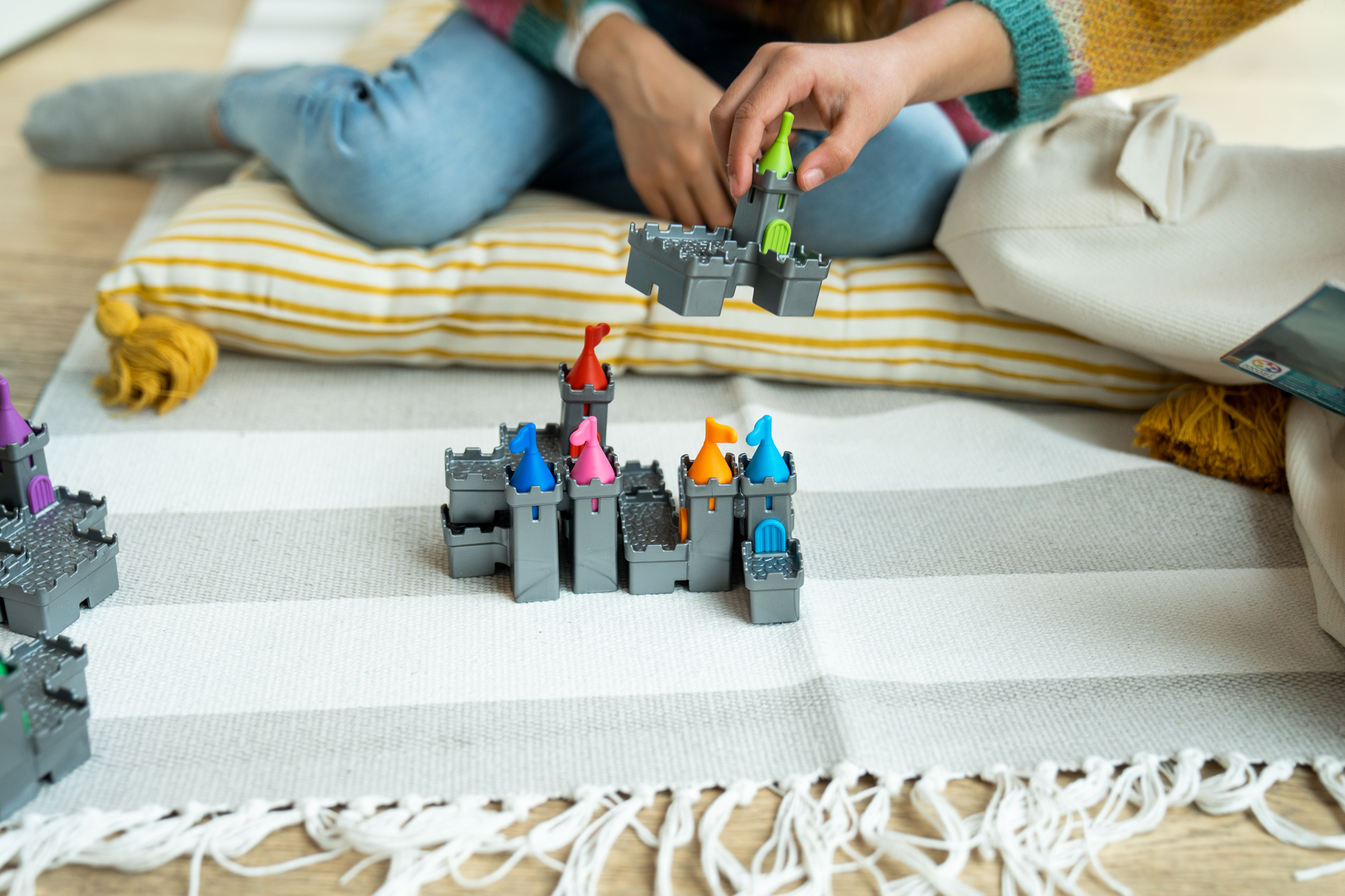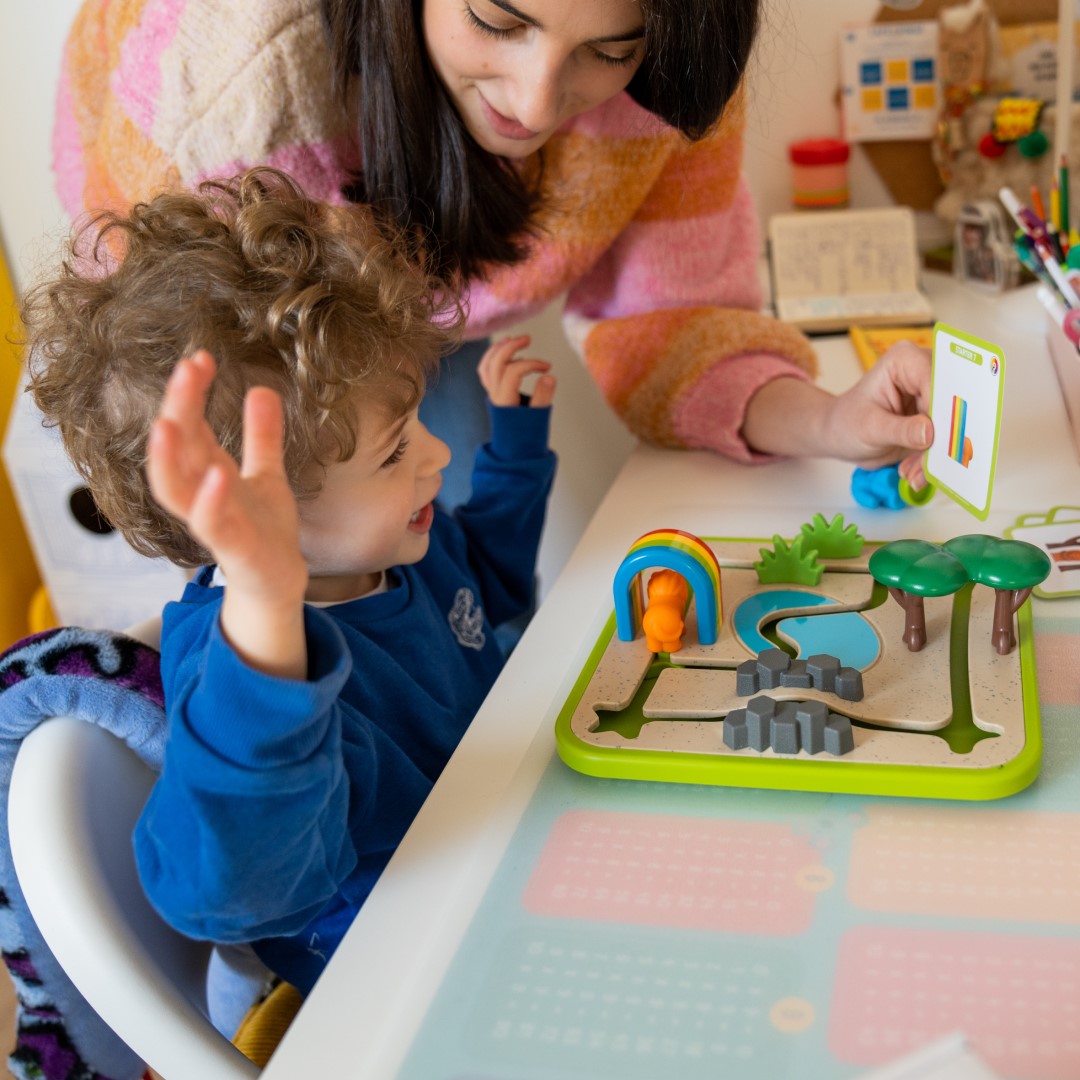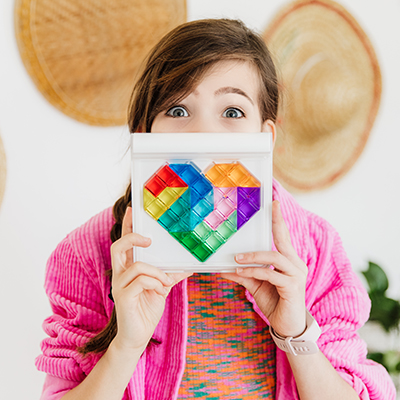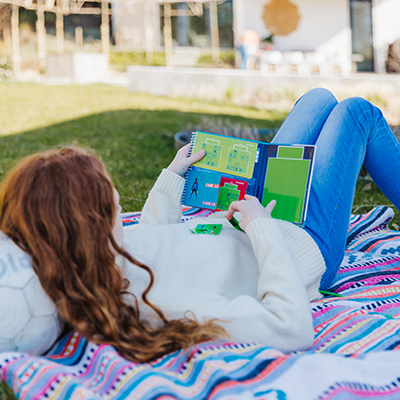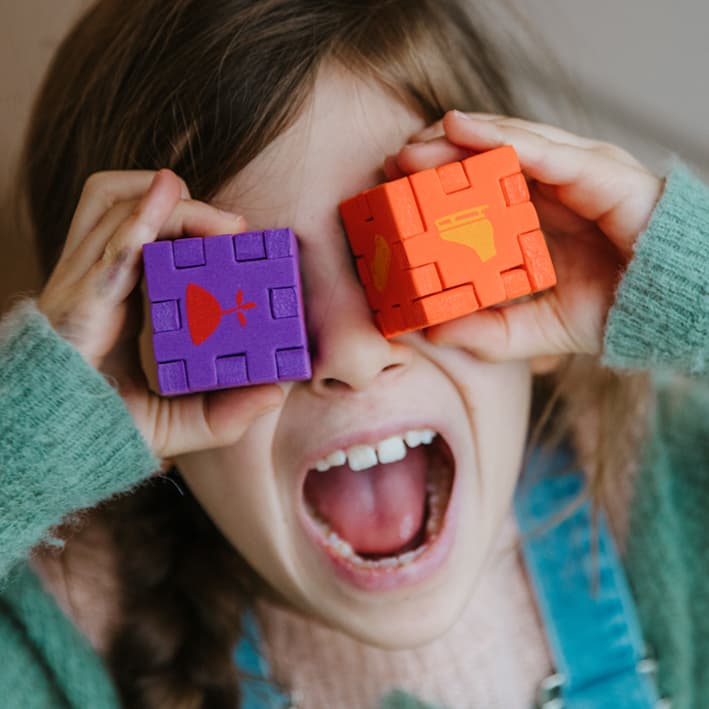Why qualitative cardboard and wooden games are worth the investment.

Lots of people with young children invest in wooden toys and games for their youngsters. These toys not only look nice in people’s interior, but they are also loved by kids and come with a multitude of advantages! And since children always want to discover new textures, materials and senses, wooden toys are a nice addition to their toy box! Here are some reasons why you should invest in adding wooden and cardboard games to your mini-me’s toy and game collection!
A game with a lovely touch
Wooden toys and games have a nice feel to them. They are warm, smooth, have some weight to them and originate from nature! These tactile characteristics make kids more aware about what they have in their hands and how they place the toys and game pieces. This contributes to their fine motor skill development. Furthermore, wood brings your little one a step closer in touch with nature. Plus: touching wood has been proven to sooth and help concentrate.
Safe and up to scratch
Great news! Wooden and cardboard games don’t only feel nice, they are safe and sturdy to play with! These toys are up to par when it comes to tantrum toy-throws and play longevity. Hard wooden toys do not break easily and when they do, they tend to be easily fixed. They do not have sharp edges when breaking. Another benefit of wooden and cardboard toys, is that their material has anti-bacterial properties and can be coloured by toxic-free pigments, making them safe for children when accidentally putting the toys in their mouths. Extra benefit: they are easy to clean! (Read more on how to clean your wooden games here).
For the love of nature
High quality cardboard and wooden games have a tendency of staying in families longer than other toys, as the material is sturdy and durable. These games are passed on from generation to generation, or from parents to befriended parents, enhancing the product’s playtime longevity. And when the time has finally come to throw the game away, it does not harm the environment! Originating from nature, cardboard and wooden games are easy-going on the environment, as they are usually toxic-free, recyclable and biodegradable.
Imagination gone wild
Tickling your child’s fantasy is important for their development. Wooden and cardboard games offer the possibility for great open-end play! Since wooden game elements are usually simple in design and do not have flashy lights or sounds, they encourage children to let their imagination run wild. Children will invent characteristics for the wooden figurines and add their own invented sound effects to their play. By open ended or imaginative play, your mini-me boost both its intellectual growth as well as their emotional intelligence. It can increase self-confidence, helps practice language skills and abstract thinking.
Add to the collection!
Looking for adding wooden or cardboard games to your collection? Here is some inspiration!
Age: 2+,
Material: Cardboard
Skills: Concentration, language, logic, problem solving, spatial insights
Age: 2-5
Material: wood
Skills: Concentration, language, logic, problem solving, spatial insights
Age: 4-9
Material: Wood
Skills: Concentration, flexible thinking, logic, problem solving, planning
Age: 3-8
Material: Wood
Skills: Concentration, logic, planning, problem solving, spatial insight
Age: 2-6
Material: Wood
Skills: Concentration, language, planning, problem solving, visual perception
More information and sources:
Ikei H, Song C, Miyazaki Y. (18 July 2017). Physiological Effects of Touching Wood. Int J Environ Res Public Health. doi: 10.3390/ijerph14070801. PMID: 28718814; PMCID: PMC5551239. https://www.ncbi.nlm.nih.gov/pmc/articles/PMC5551239/
Munir MT, Pailhories H, Eveillard M, Irle M, Aviat F, Dubreil L, Federighi M, Belloncle C. (1 May 2020). Testing the Antimicrobial Characteristics of Wood Materials: A Review of Methods. Antibiotics (Basel). doi: 10.3390/antibiotics9050225. PMID: 32370037; PMCID: PMC7277147. https://www.ncbi.nlm.nih.gov/pmc/articles/PMC7277147/
Reader’s Digest Editors (1 April 2022). 5 Benefits of encouraging your child’s imagination. Reader’s Digest. https://www.rd.com/article/encourage-your-childs-imagination/
Team LoveEvery (2022). Why wooden toys make the best playthings. Loveevery.com. https://lovevery.com/community/blog/child-development/why-wooden-toys-make-the-best-playthings/





